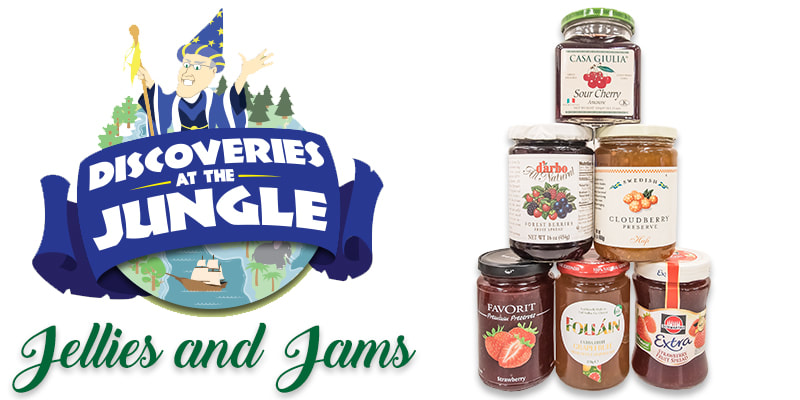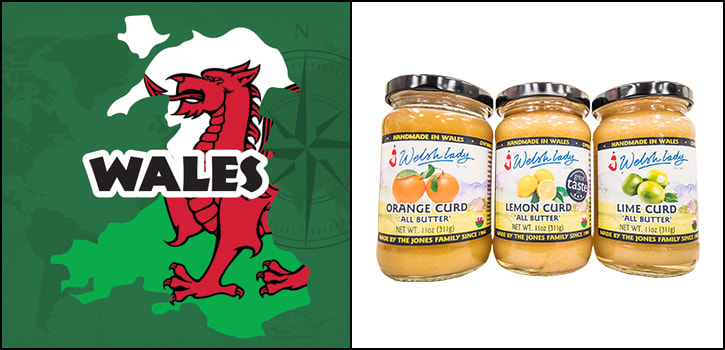
Discoveries at the Jungle: Hafi Preserves from Sweden and Welsh Lady Curds from Wales
Back to feed- Posted: 10/4/2017
- Categories: Discoveries at the Jungle
While we might have simplified the theme this month to just jams and jellies, we’re really talking about the whole world of fruit preserves, which encompasses jams, jellies, chutney, curds, spreads, and more! Fruit preserves are preparations of fruits, vegetables, and sugars that are canned or sealed for long term use. The different styles of ingredients, fruits, and vegetables in preserves determines which category they fall under.
The origin of fruit preserves are a little cloudy. Some say humans started preserving fruit around the 1st to the 4th century AD. Although, we didn’t see similar styles of preserves that we see today until Napoleon offered a reward to help feed his armies by preserving food easily – in 1785. From there we started seeing different styles of preserves such as jams, jellies, marmalades, and more!
Let’s sit back and discover fruit preserves from around the world, and hey, maybe even learn a little more about them in the process!
Hafi Preserves – Sweden
These delicious Swedish preserves have been made with traditional Swedish style sugar since 1938, when Carl Dellgrenin joined his son-in-law’s cider business. The company is still in the family to this day with his great grandson. Their line of jams include blackcurrant, queen’s preserves, elderberry, cloudberry, and gooseberry.
Where you can find these: Fairfield Location: Scandinavian Section
Did you know? Hafi produces 9000 tons of preserves a year!
These curds are more like a desert than a typical jelly or jam. Welsh Lady has been producing these for 50 years and has won 57 awards! You can get these spreads in lemon, lime, orange, apple cinnamon, and raspberry. They’re great on toast and biscuits!
Where you can find these: Fairfield Location: Orange 26
Did you know? 1869, Dr. Thomas Branwell Welch used the Concord grape to launch his grape juice company. Then, in 1918, Welch’s company made its first jam product, Grapelade. The United States Army bought the entire inventory and shipped to France for consumption by the troops during World War I. When the troops returned to the States after the war, they demanded more of this “Grapelade,” and it was produced in significant quantities. The company’s trademark Concord grape jelly debuted in 1923.
Catch the other featured items from this month here:
D’arbo Fruit Spreads from Austria and Wilkin and Sons Conserves from England
Scandinavian Delight Fruit Spreads from Denmark and Schwartau Fruit Spreads from Germany
Sarantis Preserves From Greece and Livada Preserves from Romania
Favorit Preserves from Switzerland and Casa Giulia Preserves from Italy





